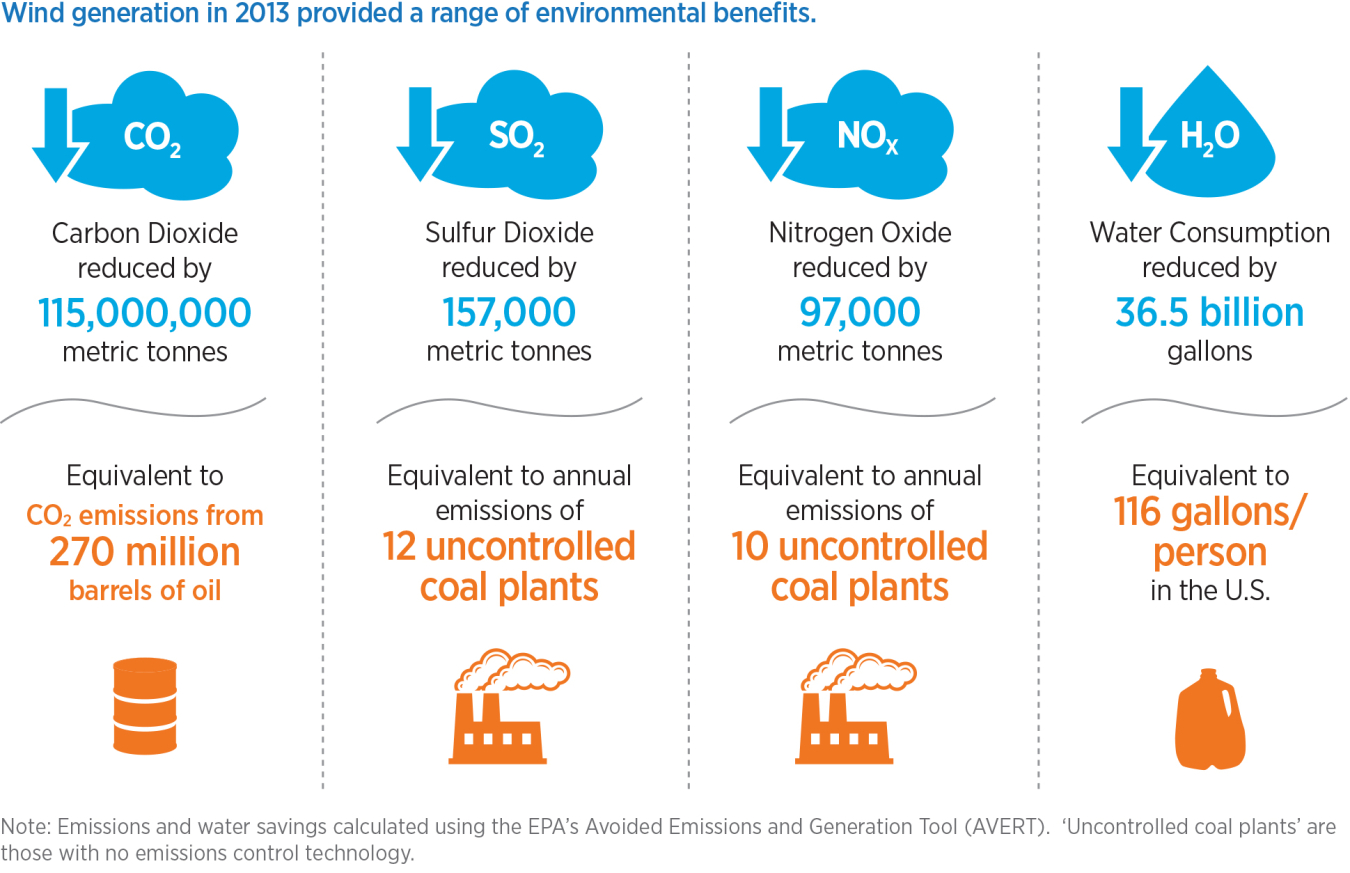
Wind energy is a clean, domestic energy source that requires little to no water and creates no air pollution when compared with conventional energy technologies. In the Energy Department’s new Wind Vision Report, a collaborative effort of more than 250 experts informed a comprehensive analysis that quantified the future national benefits of wind power, including reduced environmental impacts from the energy sector. This Earth Day, let the benefits of wind energy blow you away!
Wind energy delivers public health and environmental benefits, including reduced greenhouse gas (GHG) emissions, reduced air pollutants, and reduced water consumption and withdrawals. Many of these benefits will become an even larger part of our country’s current clean energy mix as wind energy expands into new areas.
Greenhouse Gas Emissions and Reduced Air Pollutants
The power sector is the largest contributor to GHG emissions. These gases contribute to the greenhouse effect. Additionally, air pollutants such as carbon dioxide (CO2), sulfur dioxide, and nitrogen oxides acidify lakes and streams, and contribute to smog that negatively impacts public health. Benefits from wind energy include reducing premature deaths and emergency room visits from asthma, and avoiding loss of school days due to ozone effects.
The Wind Vision Report laid out a Study Scenario that applied central projections for variables such as wind power costs, fossil fuel costs, and energy demand to current manufacturing capacity to arrive at a projected pathway to calculate potential social and economic benefits. The report concludes that U.S. wind deployment would have an overall positive environmental benefit for society:
- By 2030, wind energy can reduce 16% of the electricity sector’s CO2 emissions by 2030 and 23% by 2050.
- By 2050, wind energy can help offset 12.3 billion metric tons of greenhouse gases, equivalent to $400 billion in avoided carbon emissions at current global economic values.
- By 2050, wind energy can help offset 2.6 million metric tons of sulfur dioxide, 4.7 million metric tons of nitrogen oxides, and 0.5 million metric tons of fine particulate matter, equivalent to $108 billion in savings from avoided healthcare costs and economic damages.
Reduced Water Consumption and Withdrawals
Wind energy not only reduces air pollutants, it displaces electricity generation from other sources, preserving water for other uses. The U.S. power sector relies on water withdrawals and consumption to cool thermal (coal, natural gas, nuclear) power plants. Reductions in water use would help reduce competition for scarce water sources in areas such as the arid states in the Southwest.
Wind energy, available nationwide, is one of the keys to a greener and Earth-friendly future. Positive outcomes in public health and environmental benefits make wind energy a smart choice. To learn more about all of the environmental benefits of wind energy, please visit the Wind Program website.


